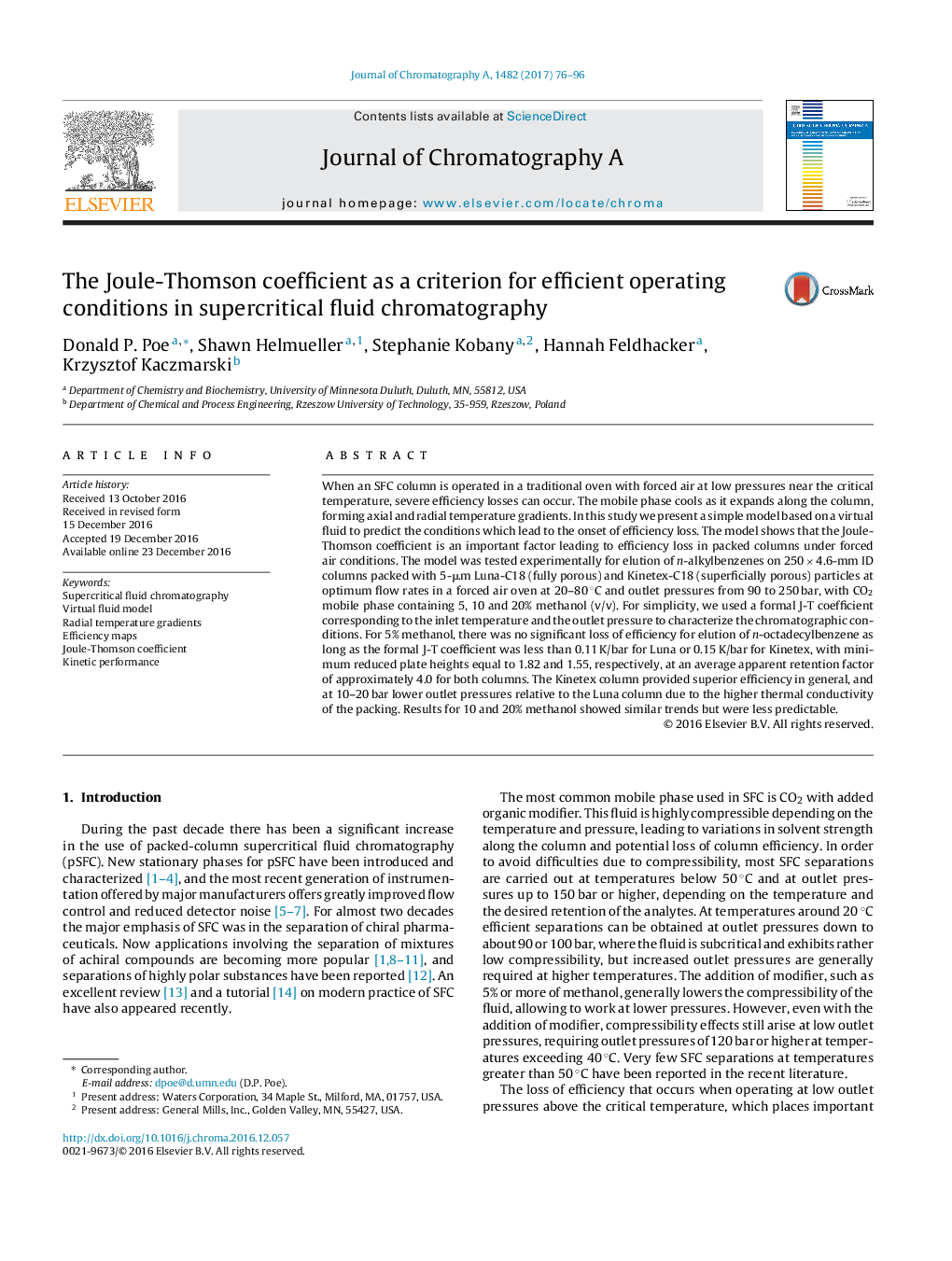| کد مقاله | کد نشریه | سال انتشار | مقاله انگلیسی | نسخه تمام متن |
|---|---|---|---|---|
| 5135425 | 1493444 | 2017 | 21 صفحه PDF | دانلود رایگان |

- A virtual fluid model to estimate radial temperature gradients in SFC is proposed.
- The onset of efficiency loss occurs at a fixed value of the Joule-Thomson coefficient.
- The concept of efficiency maps in SFC is introduced.
- Superficially porous particles provide efficient separations at lower outlet pressures.
- Kinetic performance in SFC improves as temperature is increased.
When an SFC column is operated in a traditional oven with forced air at low pressures near the critical temperature, severe efficiency losses can occur. The mobile phase cools as it expands along the column, forming axial and radial temperature gradients. In this study we present a simple model based on a virtual fluid to predict the conditions which lead to the onset of efficiency loss. The model shows that the Joule-Thomson coefficient is an important factor leading to efficiency loss in packed columns under forced air conditions. The model was tested experimentally for elution of n-alkylbenzenes on 250 Ã 4.6-mm ID columns packed with 5-μm Luna-C18 (fully porous) and Kinetex-C18 (superficially porous) particles at optimum flow rates in a forced air oven at 20-80 °C and outlet pressures from 90 to 250 bar, with CO2 mobile phase containing 5, 10 and 20% methanol (v/v). For simplicity, we used a formal J-T coefficient corresponding to the inlet temperature and the outlet pressure to characterize the chromatographic conditions. For 5% methanol, there was no significant loss of efficiency for elution of n-octadecylbenzene as long as the formal J-T coefficient was less than 0.11 K/bar for Luna or 0.15 K/bar for Kinetex, with minimum reduced plate heights equal to 1.82 and 1.55, respectively, at an average apparent retention factor of approximately 4.0 for both columns. The Kinetex column provided superior efficiency in general, and at 10-20 bar lower outlet pressures relative to the Luna column due to the higher thermal conductivity of the packing. Results for 10 and 20% methanol showed similar trends but were less predictable.
Journal: Journal of Chromatography A - Volume 1482, 27 January 2017, Pages 76-96